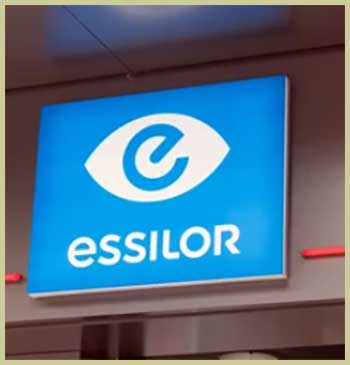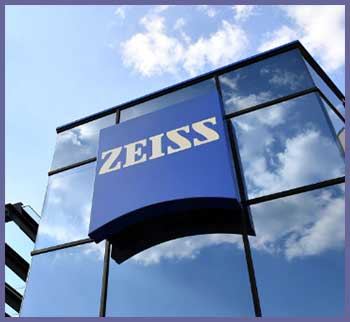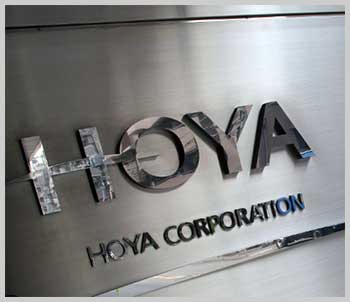If you wear glasses, you know just how important it is to have high quality lenses. The three biggest names in eyeglass lenses are Essilor, Zeiss, and Hoya. But with each company touting their lenses as the best, how do you know which one is right for you?
In this comprehensive guide, we’ll compare Essilor, Zeiss, and Hoya lenses across a range of factors like clarity, durability, coatings, and cost. We’ll also overview the key technologies behind each brand and analyze the pros and cons of each.
A Table Highlighting The Key Differences Between Essilor, Zeiss, And Hoya Lenses:
| Feature | Essilor | Zeiss | Hoya |
| Clarity | Very good | Excellent | Very good |
| Durability | Excellent | Very good | Excellent |
| Coatings | Excellent | Very good | Good |
| Cost | Expensive | Very expensive | Budget-friendly |
| Materials | Good | Excellent | Excellent |
| Brand Reputation | Excellent | Excellent | Very good |
| Progressives | Excellent | Very good | Good |
| Lightweight | Good | Very good | Excellent |
Essilor Lenses
Essilor is the world’s largest manufacturer of eyeglass lenses. The French company makes lenses under the Varilux, Crizal, Xperio, and Transitions brands.
Some of the key technologies Essilor uses in its lenses include:
- Varilux: Essilor’s main progressive lens brand. Varilux lenses feature wavefront technology to provide sharp vision at all distances.
- Crizal: Essilor’s premium anti-reflective (AR) coating. It minimizes glare and reflections while also repelling water, dust, and smudges.
- Xperio UV: Essilor’s advanced UV protection coating filters 100% of UVA and UVB light.
- Transitions: Photochromic technology that darkens lenses in sunlight and fades back to clear indoors.

Essilor Lens Pros
- Very clear optics with minimal distortion
- Durable scratch-resistant coatings
- Effective at reducing glare and reflections
- Available in a wide range of lens materials
- Backed by strong brand recognition as a leader in lenses
Essilor Lens Cons
- Tend to be more expensive than other brands
- Transitions lenses can take longer to fade from dark to clear indoors
- Limited high-index lens materials compared to Hoya and Zeiss
Also Read: Comparison Between OptiContacts And 1-800 Contacts.
Zeiss Lenses
Zeiss is a historic German brand known for advanced optics and precision engineering.
Some noteworthy Zeiss lens technologies include:
- Zeiss Precision Progressive: Zeiss’ digital progressive design provides sharp vision at all distances.
- DuraVision Platinum: Zeiss’ premium AR coating eliminates glare and reflections.
- PhotoFusion: Zeiss’ brand of photochromic lenses with fast transition speeds.
- Trivex: A lightweight, impact-resistant material that Zeiss helped pioneer.

Zeiss Lens Pros
- Very high optical clarity and acuity
- Fast photochromic reaction time
- Durable, scratch-resistant AR coatings
- Wide range of lens materials available
- Recognized as a premium, high-end brand
Zeiss Lens Cons
- Tend to be more expensive, especially higher-end designs
- Limited blue light blocking lens options
- Fewer overall lens coatings compared to Essilor
Hoya Lenses
Based in Tokyo, Hoya is a global technology company and the 2nd largest eyeglass lens producer.
Some key Hoya lens innovations include:
- Sync: Hoya’s proprietary progressive lens design provides sharp vision for any activity.
- Teflon Clear Coat: An ultra-slick top coat that repels water, grease, and smudges.
- Recharge: An anti-static coating that prevents dust buildup on lenses.
- High Index: Hoya produces lenses in ultra-thin 1.67 and 1.74 index materials.
Hoya Lens Pros

- Very lightweight and thin lens materials available
- Excellent scratch resistance and durability
- Minimizes static electricity and dust adherence
- Low light reflection and minimal distortion
- UV blocking in all lenses
Hoya Lens Cons
- Limited number of progressive lens designs
- Not as many premium AR coatings or tints
- Transitions photochromic options not as advanced as Essilor’s
- Lower brand recognition in some regions
Essilor Vs. Zeiss Vs. Hoya: Side-By-Side Comparisons
Now that we’ve covered the technologies behind Essilor, Zeiss, and Hoya lenses, let’s directly compare the brands across some key factors:
- Clarity
All three brands offer high-definition optics and sharp vision. Zeiss lenses tend to have the edge when it comes to pure clarity and visual acuity.
Winner: Zeiss
- Durability
Hoya and Essilor lenses excel in scratch resistance and durability thanks to advanced coatings. Hoya also has ultra-thin and lightweight yet impact-resistant lens materials.
Winner: Tie – Hoya and Essilor
- Coatings
Essilor Crizal leads the industry in anti-reflective coatings. Zeiss also makes quality AR lenses. Hoya has specialized coatings but fewer premium options.
Winner: Essilor
Read More: Comparison Between Visionworks And Pearle Vision
- Cost
Hoya lenses tend to be more budget-friendly compared to the premium Essilor and Zeiss brands. But all three have high-end designer options.
Winner: Hoya
- Materials
Hoya and Zeiss offer a wider range of lens materials, especially very thin high index options. Essilor has fewer lens material choices.
Winner: Hoya and Zeiss
- Brand Reputation
Essilor and Zeiss are recognized as leaders in cutting edge lens technology. Hoya flies a bit more under the radar despite making high quality lenses.
Winner: Essilor and Zeiss
Watch the video to learn more!
Frequently Asked Questions (FAQs)
Hoya lenses are comparable in quality and performance to Zeiss lenses. Both utilize advanced technology to produce lenses with sharp optics, durability, and a wide range of materials. Zeiss lenses are recognized as an industry leader in clarity but that takes nothing away from the quality of Hoya.
There is no definitive “better” between Essilor and Zeiss. Both are premium lens brands. Essilor tends to have better technology with coatings and tints while Zeiss edges out Essilor slightly in pure optical clarity. The brands also have strong reputations and offer lenses to suit different needs and budgets.
The main differences between Hoya and Essilor lenses are:
Materials: Hoya has a wider range of thin, lightweight lens materials.
Coatings: Essilor offers more premium anti-reflective and protective coatings.
Cost: Hoya lenses are usually more budget friendly overall.
Progressives: Essilor designs have slightly better progressive vision performance.
It’s hard to single out one brand as the highest quality. However, Essilor, Zeiss, and Hoya are considered the top three eyeglass lens manufacturers worldwide thanks to their advanced technology, high-end materials, and consistent quality.
Read More: Comparison Between Quay And Ray-Ban Sunglasses
Essilor Vs. Zeiss Vs. Hoya: Which Is Best Overall?
Given these head-to-head comparisons, there is no definitive “best” lens brand overall. Each has their unique strengths and advantages:
- Essilor is ideal if you prioritize top-tier AR coatings, versatility, and proven brand recognition.
- Zeiss is best for those seeking the maximum in optical clarity and precision.
- Hoya shines for its wide choice of innovative materials and durability.
The right brand also depends on your specific vision needs and prescription requirements. Be sure to discuss your options with your eye doctor to determine which lens is optimal for your eyes and lifestyle.
While Essilor, Zeiss, and Hoya lead the optical industry, keep in mind there are also other reputable lens manufacturers to consider including Nikon, Rodenstock, SEIKO, and more.
Don’t just default to the big brands without exploring your choices.

